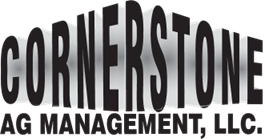Shift Alfalfa Goals with High Corn Silage Diets
As dairy and beef diets evolve towards higher corn silage content, it’s time for forage growers to rethink alfalfa management strategies. With cattle showing a clear preference for diet consistency, the shift towards more corn silage has influenced alfalfa’s role in nutrition, leading to a reevaluation of alfalfa harvest intervals and heights.
John Goeser highlights the need for flexibility in alfalfa harvest strategies, suggesting that longer intervals could yield more while providing the structural fiber needed in corn silage-heavy diets. This approach not only meets current dietary trends but also promises longer stand life and greater yield.
As the dairy industry leans more on corn silage, understanding the balance between quality and quantity in alfalfa becomes crucial. Let’s navigate these changes together, optimizing forage production to support efficient and sustainable dairy operations.
Considering how to adjust your forage growing strategies? Contact us for insights and support in making informed decisions.
To learn more, read the full article by John Goeser in Hay and Forage.












